Address
304 North Cardinal
St. Dorchester Center, MA 02124
Work Hours
Monday to Friday: 7AM - 7PM
Weekend: 10AM - 5PM
Address
304 North Cardinal
St. Dorchester Center, MA 02124
Work Hours
Monday to Friday: 7AM - 7PM
Weekend: 10AM - 5PM
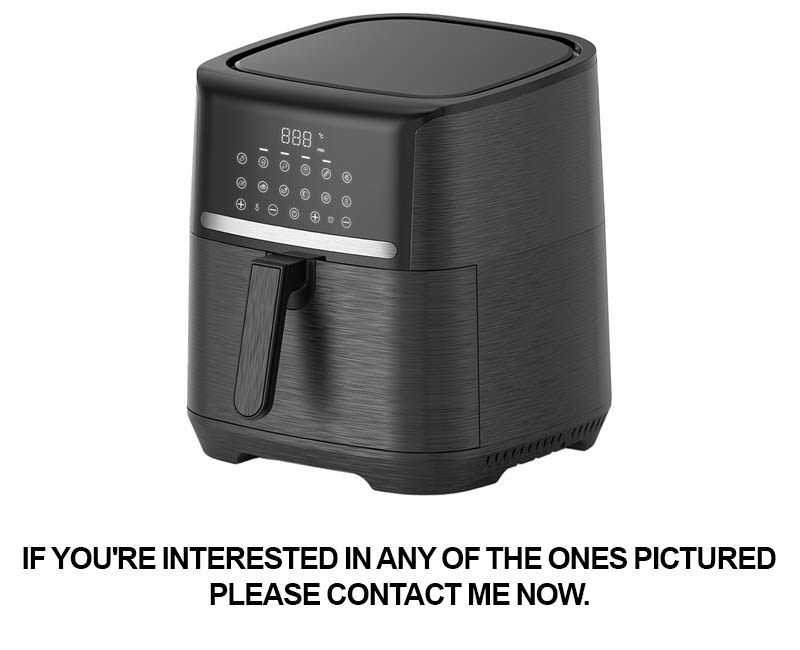
In the ever-evolving culinary landscape, the rise of commercial air fryers has sparked a revolution in the way we think about cooking. These innovative appliances are not just a trend; they’re redefining efficiency, health, and flavor in commercial kitchens around the globe. Join us as we delve into the world of commercial air fryers, exploring their features, market trends, and the incredible benefits they bring to the industry.
In recent years, the culinary landscape has undergone a remarkable transformation, with commercial air fryers emerging as a game-changer in the kitchen. These innovative appliances have been making waves in the foodservice industry, offering a healthier, more efficient alternative to traditional frying methods. From fast-food chains to fine dining establishments, the rise of commercial air fryers is a trend that’s hard to ignore.
Once confined to the realms of home kitchens, air fryers have now found their way into professional settings, largely due to their ability to cook food with minimal oil. This not only reduces the fat content of dishes but also cuts down on cleanup time, making them a favorite among chefs and kitchen staff alike.
The convenience factor is undeniable. Commercial air fryers are designed to handle high volumes of food, from crispy French fries to golden-brown chicken wings, all while using a fraction of the oil required for deep-frying. This has sparked a wave of interest in restaurants and cafes looking to offer healthier options without compromising on taste.
Another key driver behind the surge in popularity is the health-conscious consumer. As people become more aware of the risks associated with excessive oil consumption and high-fat diets, they’re seeking out establishments that prioritize health and wellness. The commercial air fryer plant caters to this demand, providing a solution that allows businesses to serve up delicious, low-fat dishes.
The technology behind commercial air fryers is also impressive. These units are equipped with advanced features that ensure consistent cooking temperatures and optimal results. With precise controls and adjustable settings, chefs can achieve the perfect crispness and texture with every batch.
Moreover, the versatility of commercial air fryers is a major draw. They can be used to cook a wide variety of foods, from vegetables and meats to breaded items and desserts. This flexibility allows kitchens to diversify their menus and cater to a broader range of dietary preferences and restrictions.
As the demand for these appliances continues to grow, manufacturers are responding with innovative designs and features. Some models now come with integrated timers, temperature controls, and even programmable settings, making them even more user-friendly and efficient.
The environmental benefits of commercial air fryers are also a significant factor. By reducing oil usage, these units help to minimize waste and lower the carbon footprint of foodservice operations. This eco-friendly approach is becoming increasingly important to consumers and businesses alike.
In the competitive foodservice industry, staying ahead of the curve is crucial. The adoption of commercial air fryers is not just a trend; it’s a strategic move for businesses looking to differentiate themselves and meet the evolving needs of their customers. From reducing operational costs to enhancing the health profile of their offerings, the advantages of incorporating air fryers into a commercial kitchen are clear.
As we look to the future, it’s likely that the commercial air fryer will become an even more integral part of the kitchen landscape. With ongoing advancements in technology and a growing emphasis on health and sustainability, these appliances are poised to become a staple in professional kitchens worldwide. The rise of the commercial air fryer is not just a fad; it’s a testament to the industry’s commitment to innovation and the consumer’s quest for better-for-you options.

The NSF certification has become a cornerstone of trust and reliability in the commercial kitchen equipment industry. This stamp of approval signifies that a product has undergone rigorous testing and evaluation to meet the highest standards of quality, safety, and performance. When a commercial air fryer plant carries the NSF certification, it sends a powerful message to customers and consumers alike.
Understanding the NSF certification process involves recognizing the meticulous scrutiny that manufacturers must endure. The National Sanitation Foundation (NSF) is an independent, not-for-profit organization that has been setting the standards for public health and safety for over 70 years. Their certification process is thorough, encompassing every aspect of a product’s design, materials, and manufacturing procedures.
Products seeking NSF certification must be tested by certified laboratories that are approved by NSF. These labs conduct a series of tests to ensure that the product meets or exceeds the NSF standards for health and safety. For air fryers, this means that every aspect from the heat distribution to the materials used in the fryer’s construction is examined for its ability to prevent cross-contamination, ensure food safety, and maintain operational efficiency.
One of the key aspects of the NSF certification is the focus on health and safety. Air fryers, in particular, are designed to use less oil than traditional deep fryers, making them a healthier choice for cooking. The NSF certification process verifies that these claims are backed by the product’s performance, ensuring that customers are getting the health benefits they expect. This is particularly important in the commercial setting where health and safety are paramount.
In addition to health and safety, the NSF certification also addresses the environmental impact of commercial kitchen equipment. The certification process includes an evaluation of the energy efficiency of the air fryer, ensuring that it is not only safe and healthful but also environmentally responsible. This aspect is crucial as businesses strive to reduce their carbon footprint and operate more sustainably.
The certification process also takes into account the durability and longevity of the product. The NSF standards require that air fryers from certified plants are built to withstand the demands of continuous use in a commercial kitchen. This means that the fryers are designed to handle high volumes of food, extreme temperatures, and constant cleaning without compromising their performance or safety.
Furthermore, the NSF certification extends to the user experience. It ensures that the air fryers are easy to operate, maintain, and clean, which is essential for busy kitchen staff. The certification process includes assessments of the fryer’s controls, user interface, and overall design, making sure that they are intuitive and reliable.
For consumers, the NSF certification serves as a buying guide. When they see the NSF mark on a product, they can be confident that it has been evaluated by a respected, third-party organization. This not only builds trust but also helps in making informed purchasing decisions, especially in an industry where quality can vary widely.
The certification process also includes regular audits to ensure that the standards are consistently met. This ongoing oversight is critical because it means that the NSF certified commercial air fryer plant must continue to maintain high-quality standards over time, not just during the initial certification process.
In conclusion, the NSF certification is more than just a label on a product; it’s a commitment to excellence. For a commercial air fryer plant to earn this certification, it must demonstrate a commitment to quality, safety, health, environmental responsibility, and customer satisfaction. This rigorous process sets the certified air fryer plants apart from their competitors, providing a level of assurance that is invaluable in the commercial kitchen equipment market.

The commercial air fryer plant has emerged as a revolutionary force in the culinary landscape, redefining the way chefs and foodservice professionals approach frying. This innovative technology has not only changed the game but has also set new standards for efficiency, health, and sustainability.
With its ability to cook food with a fraction of the oil traditionally required, the commercial air fryer plant has become a favorite among health-conscious consumers and operators looking to reduce their carbon footprint. The plant’s compact design and advanced heating elements allow for rapid and even cooking, ensuring that each dish is crispy on the outside and tender on the inside without the greasy aftermath that comes with traditional deep-fat frying.
The heart of the commercial air fryer plant lies in its convection system, which circulates hot air around the food at high speeds. This process not only cooks the food more quickly but also helps to lock in natural flavors and nutrients, making it a healthier alternative to traditional frying methods. Chefs and operators are now able to offer a wider range of fried dishes, from crispy French fries to golden-brown chicken wings, all while maintaining a cleaner kitchen environment.
One of the standout features of the commercial air fryer plant is its versatility. It can handle a variety of foods, from vegetables to meats, and even breaded seafood, all with minimal oil. This flexibility has allowed restaurants and foodservice establishments to diversify their menus without the need for multiple fryers, saving space and reducing energy costs.
In terms of maintenance, the commercial air fryer plant is a breeze to clean. Its non-stick surfaces and easy-to-remove parts make it simple to keep sanitized and ready for the next batch of food. This not only ensures food safety but also extends the life of the equipment, making it a cost-effective investment for any commercial kitchen.
The energy efficiency of the commercial air fryer plant is another key factor that has won over many operators. By using up to 80% less oil than traditional frying methods, these units can significantly reduce utility bills. Additionally, the rapid cooking times mean that the fryer can be used more frequently throughout the day without the same energy drain as a deep fryer.
The commercial air fryer plant has also had a notable impact on the sustainability movement in the foodservice industry. As more businesses strive to be eco-friendly, the reduced oil usage and lower energy consumption of these fryers are a significant draw. They align with the growing demand for sustainable practices that not only benefit the environment but also the bottom line.
Moreover, the commercial air fryer plant has become a favorite among health professionals who advocate for healthier eating habits. The ability to offer fried foods with less oil opens up a world of possibilities for creating dishes that are both delicious and nutritious. This has led to an increase in popularity for fast-casual restaurants and cafes that emphasize health and wellness.
The technology behind the commercial air fryer plant has also spurred innovation in the kitchen. Chefs are now experimenting with new recipes and cooking techniques that were previously not feasible with traditional frying methods. This has led to the creation of unique dishes that are both visually appealing and satisfying, further broadening the appeal of the commercial air fryer plant.
In conclusion, the commercial air fryer plant has become a game-changer in the culinary world. Its ability to cook with less oil, its energy efficiency, and its versatility have made it an indispensable tool in commercial kitchens. As the demand for healthier, more sustainable food options continues to grow, the commercial air fryer plant is poised to remain at the forefront of the industry, revolutionizing the way we think about frying and food preparation.
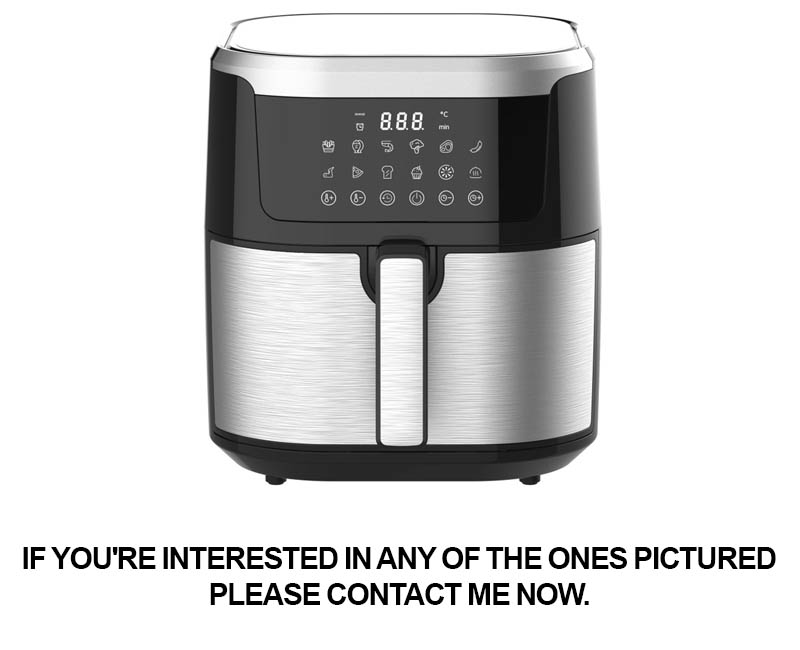
The NSF certified air fryer isn’t just a kitchen appliance; it’s a beacon of innovation and efficiency. Here’s a closer look at its standout features and groundbreaking innovations:
Advanced Heat Distribution: The air fryer boasts a unique heating system that circulates hot air around the food, ensuring even cooking without the need for oil. This feature not only reduces fat content but also makes for a more consistent and delicious outcome.
User-Friendly Controls: The controls on the air fryer are designed for ease of use. With simple dials and buttons, users can easily set the temperature and cooking time, making it perfect for both novices and seasoned chefs.
Safety Features: Safety is a top priority, and the NSF certified air fryer comes with various safety features. It includes an automatic shut-off function to prevent overheating and a cool-touch exterior to avoid burns.
Large Capacity: Whether you’re cooking for one or a crowd, this air fryer offers a spacious interior that can accommodate large batches of food, making it ideal for family meals or catering events.
Versatile Cooking Options: Unlike traditional fryers that are limited to frying, this air fryer can handle a variety of cooking methods, including roasting, baking, and grilling. This versatility allows chefs to experiment with different recipes and cooking styles.
Energy Efficiency: The air fryer is engineered to be energy-efficient, using up to 80% less oil than traditional frying methods. This not only saves money on oil but also reduces the overall energy consumption.
Non-Stick Coating: The interior of the air fryer is lined with a non-stick coating, which makes it easy to clean and reduces the risk of food sticking. This is a significant advantage for those who want to spend less time cleaning up after cooking.
Timer and Temperature Control: With precise temperature control and a timer, users can set the exact cooking time and temperature they need. This ensures that food is cooked to perfection every time.
Digital Display: The digital display on the air fryer provides a clear, easy-to-read interface, allowing users to monitor cooking progress at a glance.
Removable Parts for Easy Cleaning: Many of the air fryer’s components are removable, which makes cleaning a breeze. The basket, tray, and cooking pot can all be washed in the dishwasher, saving time and effort.
Noise Reduction Technology: One of the innovations that sets this air fryer apart is its noise reduction technology. It operates quietly, making it a great choice for home use or in noise-sensitive commercial kitchens.
Cookbook and Recipe Guide: To help users get the most out of their air fryer, the manufacturer often includes a recipe book and guide. This resource provides a wealth of ideas for cooking everything from crispy French fries to juicy chicken wings.
Built-In Filter System: To address one of the biggest concerns with air fryers—the potential for oil and grease buildup—this model includes a built-in filter system that captures excess oils and food particles, ensuring a cleaner kitchen environment.
Smartphone Compatibility: For those who are tech-savvy, the air fryer may offer smartphone compatibility, allowing users to control and monitor their cooking through a dedicated app.
Each of these features and innovations comes together to create an air fryer that is not just a tool for cooking, but a game-changer for the commercial kitchen. Its ability to provide healthier, more efficient, and versatile cooking options makes it a must-have for any establishment looking to modernize its culinary practices.

In the ever-evolving landscape of the kitchen appliance industry, the air fryer has emerged as a beacon of innovation and efficiency. Let’s delve into the latest market trends and data that highlight its growing popularity and the reasons behind its surge.
Consumer Demand for Healthier AlternativesThe rise of health consciousness among consumers has driven a significant shift towards healthier cooking methods. Air fryers, with their ability to offer crispy fried foods with up to 80% less oil than traditional deep frying, have captured the attention of health-conscious consumers. Data from market research firm Statista indicates that the global air fryer market size is expected to grow at a CAGR of 9.2% from 2021 to 2028, reflecting a clear trend towards healthier lifestyles.
Technological Advancements Fueling GrowthThe integration of cutting-edge technology has played a pivotal role in the air fryer’s ascent. Modern air fryers come with features like digital controls, programmable timers, and smart connectivity, allowing for precise temperature and time management. According to a report by Grand View Research, these technological advancements have broadened the appeal of air fryers beyond the confines of the home kitchen into commercial settings, such as restaurants and foodservice operations.
E-commerce and Online SalesThe convenience of online shopping has also contributed to the air fryer’s market growth. As more consumers turn to e-commerce platforms for their kitchen appliances, the ease of purchasing an air fryer has become seamless. Online sales data from companies like Amazon show a consistent increase in air fryer sales, with peak periods often coinciding with holidays and seasonal promotions.
Urbanization and Compact Living SpacesUrbanization and the trend towards smaller living spaces have made compact kitchen appliances a necessity. Air fryers, with their space-saving design and ability to cook a variety of foods, have become a staple in urban kitchens. Research from Euromonitor International reveals that in regions with high urbanization rates, the demand for air fryers has surged as they cater to the needs of consumers living in limited spaces.
Health and Wellness Driven MarketingBrands have capitalized on the health and wellness trend by marketing air fryers as a solution for preparing healthier versions of favorite comfort foods. The use of catchy phrases like “fry less, flavor more” and “air-fried deliciousness” has resonated with consumers looking to enjoy their favorite treats without the guilt. Marketing data shows a correlation between these health-focused messages and increased sales.
Commercial Adoption in the Foodservice SectorThe commercial adoption of air fryers is another key trend. Restaurants and foodservice operators are increasingly incorporating air fryers into their kitchens for their efficiency and versatility. They offer a healthier option for patrons without compromising on taste. A survey by the National Restaurant Association found that over half of operators plan to invest in healthier cooking methods in the coming years, with air fryers being a top choice.
Global Market ExpansionThe air fryer market is not limited to any single region. It has seen significant growth across the globe, with Asia Pacific being a particularly dynamic market. This expansion is attributed to rising disposable incomes, changing dietary preferences, and the increasing awareness of the benefits of air frying. Global market analysis by Mordor Intelligence predicts that Asia Pacific will account for the largest share of the air fryer market by 2026.
The Sustainability AngleSustainability is a growing concern, and air fryers offer a greener alternative to traditional cooking methods. With less oil used and potentially less food waste, they align with the principles of sustainability. Companies that emphasize eco-friendly features and certifications are likely to see increased consumer interest and loyalty.
In conclusion, the market trends and data surrounding air fryers paint a picture of a product that is not only popular but also poised for continued growth. Its health benefits, technological advancements, and versatile applications make it a compelling choice for consumers and commercial kitchens alike. As the industry evolves, it will be fascinating to see how air fryers adapt and integrate further into the global culinary landscape.
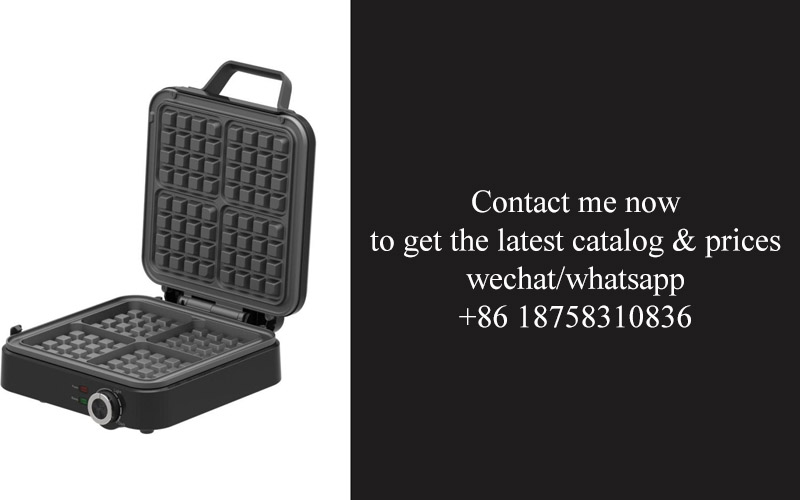
In the realm of culinary innovation, the integration of air fryers in commercial settings has not only reshaped the way we perceive frying but also brought about significant health and efficiency benefits. Let’s delve into the advantages these appliances offer.
The air fryer’s ability to mimic traditional frying with minimal oil has been a game-changer for health-conscious consumers. By using a fraction of the oil required for deep-frying, air fryers reduce the calorie and fat content of fried foods. This technology is a godsend for those looking to maintain a balanced diet or manage their health conditions like diabetes and heart disease.
Moreover, the health benefits extend beyond fat reduction. Air frying retains more nutrients in foods compared to other cooking methods like boiling or steaming. This is because the rapid circulation of hot air around the food minimizes nutrient loss through evaporation. Whether it’s vegetables, meats, or even desserts, the nutritional value of the final dish is preserved.
Efficiency gains are another area where air fryers shine. The compact and countertop-friendly design means that these appliances don’t take up much space in commercial kitchens, making them ideal for busy restaurants and fast-casual establishments. The rapid cooking times—often halving the traditional frying duration—mean less wait time for customers and a more efficient workflow for kitchen staff.
The even heat distribution ensures that food is cooked to perfection throughout, eliminating the need for constant stirring or flipping. This not only saves time but also reduces the risk of burning or overcooking, which can lead to wastage. Additionally, the lack of a deep oil bath means less oil splatter and a cleaner cooking environment.
Energy efficiency is also a key advantage. Air fryers use less energy than traditional fryers, contributing to lower utility bills and a more sustainable kitchen operation. In an era where environmental concerns are at the forefront, the energy-efficient nature of air fryers is a compelling reason for commercial kitchens to make the switch.
Furthermore, the versatility of air fryers is impressive. They can be used for a variety of cooking techniques, including roasting, grilling, and baking. This versatility means that chefs can expand their menu offerings without the need for additional kitchen equipment. It’s a cost-effective solution that also enhances the creativity and range of dishes available.
The convenience factor cannot be overstated. Air fryers are easy to use, clean, and maintain. The non-stick surfaces make cleanup a breeze, and the absence of oil means fewer greasy messes. This ease of use is particularly appealing to busy kitchens that need to maintain high standards of cleanliness and hygiene.
Lastly, the cost savings over time are substantial. While the initial investment may be higher than traditional fryers, the reduced need for oil, the lower energy consumption, and the extended lifespan of the appliance can quickly offset these costs. For businesses aiming to cut operational expenses without compromising on quality, air fryers offer a smart and sustainable choice.
In conclusion, the health benefits of air fryers, combined with their efficiency gains, make them an invaluable asset in the commercial kitchen. From reduced fat content to increased nutrient retention, these appliances are revolutionizing the way we think about fried foods. With their versatility, cost savings, and ease of use, air fryers are poised to become a staple in kitchens around the globe.
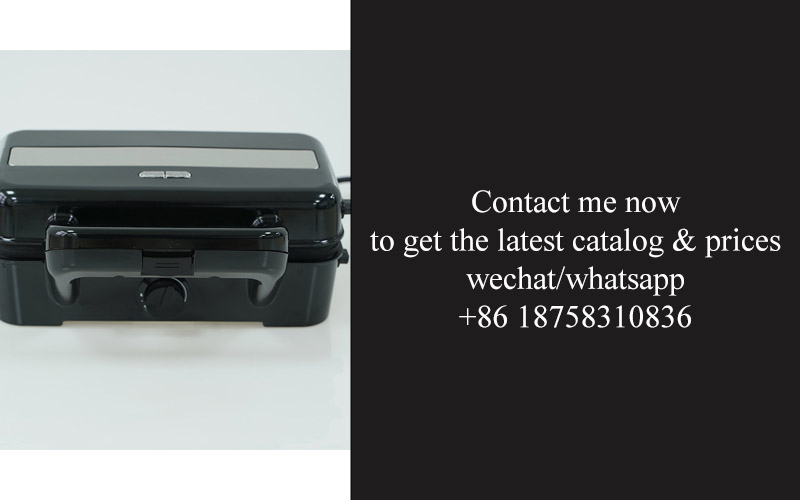
In one bustling café, the introduction of an NSF certified air fryer plant marked a shift in how food was prepared and served. The café, known for its diverse menu, was looking to enhance both health offerings and efficiency. The new fryer plant, designed with advanced features and innovations, quickly became the cornerstone of their kitchen.
The air fryer plant’s ability to cook with minimal oil has not only appealed to the café’s health-conscious patrons but has also impressed the kitchen staff. Its sleek design and ease of use have made it a favorite among the busy café team. Customers are raving about the crispy texture of the air-fried foods, which maintains a similar flavor to traditional fried dishes while cutting down on calories and fats.
Another success story comes from a high-end steakhouse that invested in an NSF certified commercial air fryer plant. The steakhouse’s executive chef was eager to diversify the menu without compromising on quality. The air fryer plant, with its precise temperature control and ability to crisp foods to perfection, allowed the kitchen to introduce new dishes that balanced rich flavors with a healthier cooking method.
One of the standout dishes has been the air-fried onion rings, which are a hit with the guests. The rings are golden brown and offer a satisfying crunch, but with up to 70% less fat compared to traditional deep-fried onion rings. This has been a game-changer for the steakhouse, attracting a broader clientele looking for lighter yet indulgent options.
In a quick-service restaurant chain, the introduction of the NSF certified air fryer plant has revolutionized the way they prepare popular items like French fries and chicken fingers. The plant’s consistent and uniform cooking has reduced the need for constant monitoring and adjusting, streamlining the kitchen’s workflow. As a result, the quality of the food has improved, and the restaurant has seen a rise in customer satisfaction.
The chain’s managers have also noticed a significant reduction in operational costs. With the air fryer plant, they’ve been able to cut down on the amount of oil used, leading to lower maintenance costs for the fryer and less waste. Additionally, the shorter cooking time has decreased the amount of food that spoils, further saving on costs.
A family-owned Italian restaurant has embraced the air fryer plant to create a healthier version of traditional Italian fried foods, like arancini and fried zucchini flowers. The plant’s ability to achieve a golden-brown finish with minimal oil has allowed the restaurant to maintain the authenticity of these dishes while appealing to a newer generation of diners who prioritize health and wellness.
The positive feedback from customers has been overwhelming. They appreciate the taste and texture of the air-fried dishes, often remarking on how much lighter the meals feel. This success has encouraged the restaurant to expand its offerings, with plans to introduce more air-fried options to the menu.
In a school cafeteria, the introduction of the air fryer plant has been a hit with students and staff alike. The school has long struggled with finding a healthy alternative to deep-fried snacks, and the air fryer plant has provided the solution. It’s used to prepare everything from chicken strips to cheese puffs, offering a variety of choices that are both satisfying and nutritious.
The school’s nutritionist has praised the air fryer plant for its ability to reduce the fat content in food without compromising taste. This has been particularly beneficial for students who have dietary restrictions or are looking to make healthier choices. The plant’s consistent results have also made it a favorite among the kitchen staff, who appreciate the ease of use and the reduced clean-up time.
These case studies illustrate the versatility and effectiveness of the NSF certified commercial air fryer plant across different types of establishments. From independent cafes to large restaurant chains and educational facilities, the plant has proven to be a valuable tool in the quest for healthier, more efficient food preparation.
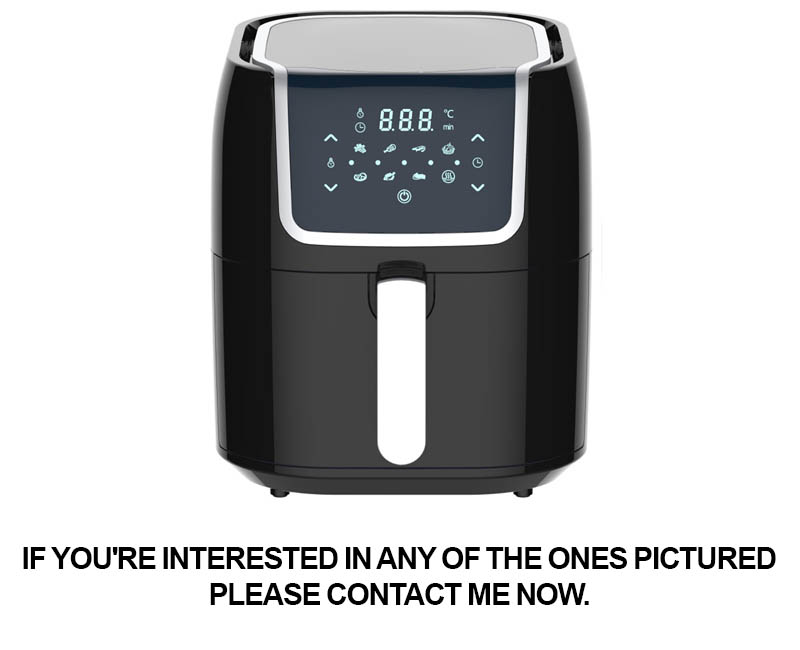
In the ever-evolving landscape of commercial kitchen technology, the rise of air fryers has been nothing short of revolutionary. These devices, once a novelty in home kitchens, have now become a staple in professional settings, offering numerous benefits that cater to both health-conscious consumers and busy chefs. As we delve into the future of commercial air fryers, it’s clear that innovation and sustainability will be key drivers.
The integration of smart technology has already begun to transform the commercial air fryer market. Imagine a fryer that can be controlled remotely, or one that adjusts its cooking temperature and time based on the ingredients being used. Such advancements are not just about convenience; they’re about efficiency and precision. Smart fryers can help reduce energy consumption and minimize waste, which is crucial in a world where sustainability is a top priority.
Energy efficiency is another area where we’re seeing significant progress. Modern air fryers are designed to use less oil and less energy than traditional fryers, which not only cuts down on costs but also reduces the environmental impact. The future of commercial air fryers will likely see even more energy-saving features, possibly including solar-powered options, further reducing the carbon footprint of foodservice operations.
Customization is becoming a buzzword in the commercial kitchen industry, and air fryers are not immune to this trend. Manufacturers are now offering fryers that can be tailored to specific recipes and cooking styles. Imagine a fryer that can switch from making crispy French fries to perfectly golden onion rings with a simple adjustment. This level of flexibility allows chefs to offer a wider variety of menu items without the need for multiple fryers.
One of the most exciting developments in the commercial air fryer sector is the use of alternative cooking mediums. While traditional oil is still popular, there’s a growing interest in healthier options like avocado oil, olive oil, and even water-based cooking techniques. The future will likely see more innovative cooking mediums that are not only healthier but also more sustainable.
The health benefits of air frying are undeniable. By using significantly less oil than traditional deep-frying methods, air fryers help reduce the calorie content of fried foods. This is a significant advantage for restaurants looking to cater to health-conscious diners, who are increasingly seeking out establishments that offer lower-calorie, heart-healthy alternatives. The future of commercial air fryers will likely include features that make it even easier for chefs to create healthful dishes that are also delicious.
In terms of safety, the future of commercial air fryers promises to be even safer than today’s models. With advancements in materials and design, these fryers will be less prone to overheating and fire hazards. Features like automatic shut-off and temperature control will become standard, ensuring that chefs can work safely without the constant worry of a potential fire.
The rise of mobile and portable air fryer units is also a trend that looks set to continue. These compact devices are perfect for catering, pop-up restaurants, and food trucks, allowing chefs to bring the benefits of air frying to a wider audience. The future will likely see even more portable options that are durable, easy to clean, and efficient.
The global foodservice industry is constantly seeking ways to improve the dining experience, and the commercial air fryer is no exception. We can expect to see a greater emphasis on integration with other kitchen equipment, such as conveyor ovens and smart refrigeration systems. This interconnectedness will streamline kitchen operations and enhance the overall quality of food preparation.
As we look ahead, it’s clear that the future of commercial air fryers will be defined by a combination of technological innovation, health consciousness, and sustainability. From smart features and energy efficiency to customization and alternative cooking mediums, the next generation of air fryers will continue to push the boundaries of what’s possible in the commercial kitchen. It’s an exciting time for chefs and foodservice operators, as these advancements will not only improve their bottom line but also enhance the health and satisfaction of their customers.

In wrapping up this journey through the commercial air fryer revolution, we find ourselves at the crossroads of innovation and practicality. The air fryer has transcended its kitchen gadget origins to become a cornerstone in commercial cooking. It’s not just a tool; it’s a game-changer that’s reshaping the culinary landscape. As we stand on the brink of what could be a new era, let’s reflect on the impact of this technology and what it means for the future.
The adoption of air fryers in commercial kitchens has been nothing short of transformative. What was once a niche appliance has now become a staple, thanks to its ability to deliver crispy, delicious results with significantly less oil than traditional frying methods. This shift has not only been a boon for health-conscious consumers but also for businesses looking to reduce their operational costs and environmental footprint.
As we look ahead, the trajectory of commercial air fryers is clear: it’s upward. The technology is advancing, and with it, the capabilities of these appliances are expanding. From programmable settings that cater to a variety of recipes to smart features that allow for remote monitoring and control, the future of air fryers is poised to be more integrated and intuitive than ever before.
The rise of the air fryer in commercial settings has sparked a wave of innovation. Manufacturers are responding to the demand for more efficient, versatile, and user-friendly models. These advancements are not just about improving performance; they’re about enhancing the overall kitchen experience. From the chef’s perspective, this means more time to focus on creativity and less time on the technical aspects of cooking.
The health benefits of air frying are well-documented. With the ability to cook with up to 80% less oil than traditional frying, air fryers have become a favorite among health-conscious consumers. This reduction in fat content doesn’t compromise on taste or texture, making it a win-win for everyone involved. The nutritional advantages have not gone unnoticed by commercial kitchens either, as operators seek to offer healthier menu options that appeal to a broader audience.
Efficiency gains are another compelling reason for the air fryer’s surge in popularity. Not only do they use less oil, but they also cook food faster and with less energy. This means shorter wait times for customers and reduced utility bills for businesses. The time-saving aspect is particularly valuable in busy commercial kitchens where every minute counts.
Case studies from around the world are painting a picture of success for the implementation of air fryers in commercial settings. From fast-food chains to fine dining establishments, the results have been overwhelmingly positive. Customers are enjoying the taste and health benefits, while operators are reaping the rewards of increased efficiency and cost savings.
As we consider the future, it’s hard to ignore the potential for air fryers to become even more central to commercial kitchens. With the continued development of technology, we can expect to see air fryers that are even more precise, adaptable, and integrated into the overall kitchen workflow. The possibilities are vast, from the ability to customize cooking profiles to the potential for connectivity with other kitchen equipment.
In terms of sustainability, the future looks bright for air fryers. As businesses increasingly focus on reducing their environmental impact, the energy-efficient and low-oil cooking methods of air fryers will likely become even more appealing. This shift is not just good for the planet; it’s good for the bottom line.
In conclusion, the air fryer revolution has brought about a paradigm shift in commercial cooking. It’s a testament to human ingenuity and the relentless pursuit of better, healthier, and more efficient ways to feed the world. As we embrace this technological advancement, we’re not just cooking up a storm; we’re cooking up a future that’s brighter, cleaner, and more sustainable. The air fryer is not just a tool; it’s a symbol of progress, and its journey is far from over.